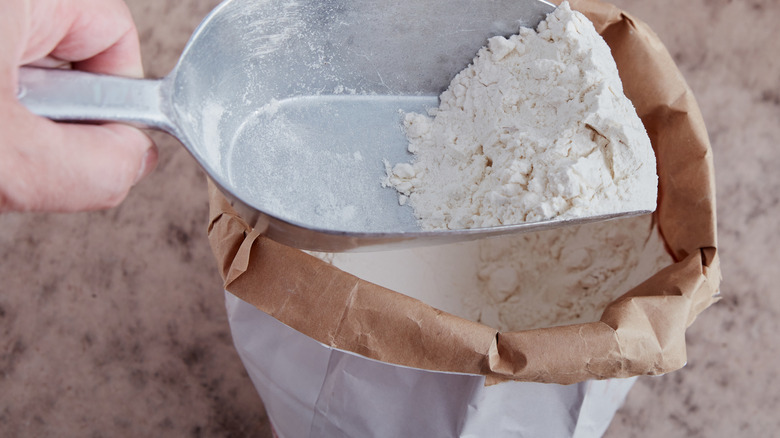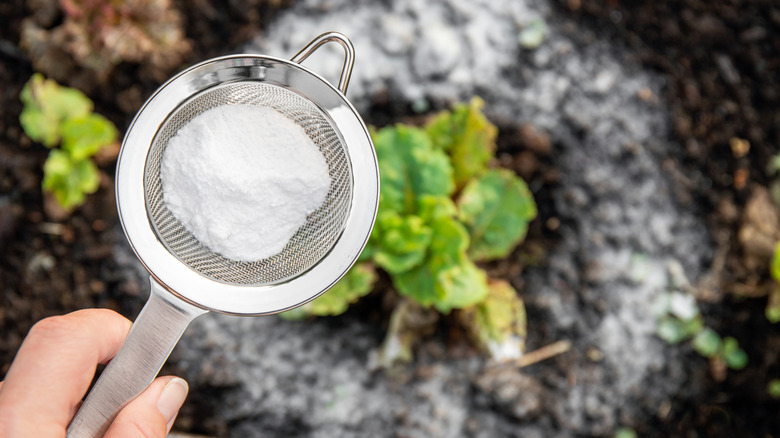Why Do People Add Cornstarch To Their Garden Soil & Should You Try It?
Picture a garden in which all of the plants are growing healthy, green, and thriving, then imagine that one ingredient you have in your kitchen could help you achieve this thriving ecosystem: cornstarch. Although it's an unconventional use for cornstarch, you may have heard that adding cornstarch to your garden could improve soil health. Some studies suggest that a few cornstarch-based materials — such as cornstarch biopolymers or hydrothermally modified cornstarch film — can improve root development when used as an amendment. There are also claims that it can support beneficial microbes, which play a key role in breaking down organic matter and making nutrients available to plants.
While lab studies show that these cornstarch-derived substances can be excellent for soil health, the same can't be said of plain cornstarch you'd find at the grocery store. People may mistakenly add cornstarch to their gardens hoping for these results, but the research does not strongly support the idea that pantry cornstarch will provide the same benefits. Most findings focus on modified cornstarch materials rather than the unprocessed cornstarch found in home kitchens.
If used in the garden, plain cornstarch will biodegrade over time, but it does not directly provide essential plant nutrients like nitrogen, phosphorus, or potassium. Unlike compost or organic fertilizers, it is not a rich source of minerals, though it may contribute in minor ways to soil structure. Cornstarch is a natural polymer, which means it has the potential to increase moisture retention. However, excessive cornstarch application could create imbalances in the soil due to its thickening and gelling properties, potentially leading to poor drainage rather than offering meaningful benefits.
Experimenting with cornstarch and other tips for soil health
You can identify and treat nutrient deficiencies in plants when you see signs like yellowing leaves (often a sign of magnesium deficiency) or stunted growth (a common indicator of calcium deficiency). For those who enjoy experimenting, small-scale tests in the garden might provide insights into whether cornstarch affects soil texture or improves water retention. If you're curious about using cornstarch in your garden, a cautious approach is best. Some gardeners apply a thin, even layer around plant bases, and even sprinkle on the leaves and water it lightly to encourage breakdown into the soil. While this may not provide a significant nutrient boost, it could support microbial activity in some cases.
Without scientific backing, it's uncertain how much cornstarch truly benefits soil health. Since research on plain cornstarch's effects is limited, it should ideally be used together with other tips for growing a healthy garden. For guaranteed results, sticking to well-researched soil amendments is the best approach to fostering a thriving and nutrient-rich garden. Compost remains one of the best ways to enrich soil with nutrients that plants can absorb. Organic mulch helps retain moisture, regulate temperature, and gradually decompose into beneficial organic matter. Conducting regular soil tests can also ensure your plants are getting the right balance of nutrients.

